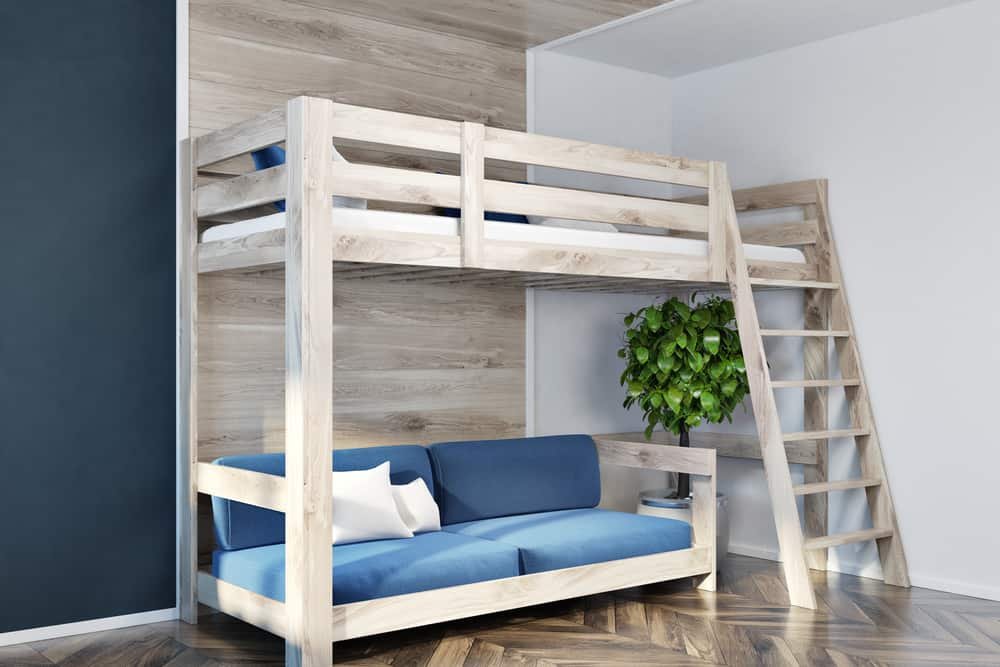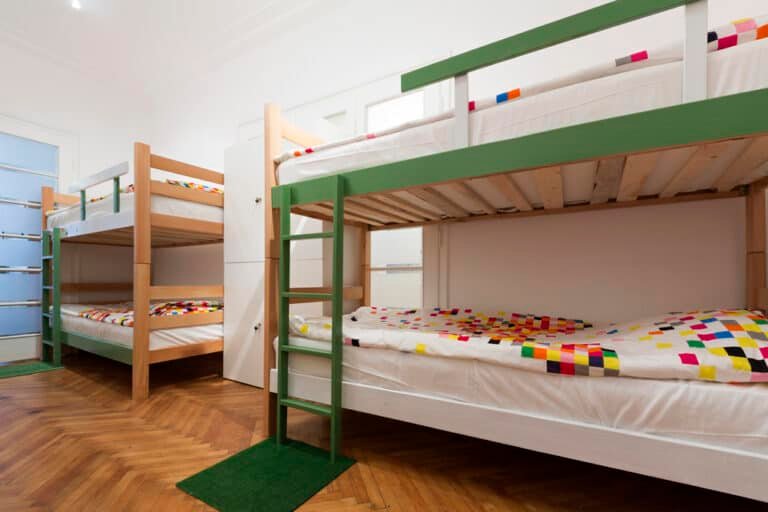Are Loft Beds Comfortable? (Your Questions Answered)
Homebody Forever is reader-supported. We may receive a commission if you make a purchase through a link on this post.
Loft beds have become a popular option for people living in small spaces. And it’s easy to see why. They save space, are multi-functional, and can make a room aesthetic pop. But at the end of the day, their primary function is for rest and recovery, so you probably don’t want to sacrifice comfort if you want your bed to serve that purpose.
Loft beds can be very comfortable. You don’t need to sacrifice comfort for the sake of functionality or design. Some options allow you to have a balance of all three.
You do need to bear in mind several factors–the materials of the loft bed, the mattress type and quality, the height of your ceiling, the size of your room, the location of your loft bed, and how hot or cold your room gets.

Considerations when choosing a loft bed
Before choosing a loft bed, you need to figure out what is most important to you. Are you in a tiny studio apartment, and the loft bed is a way for you to maximize storage space? Or do you like the aesthetic that a loft bed can bring to your space? Perhaps you work from home and want to set up an office, but you don’t have a spare room.
Then there’s also your budget—how much are you willing to spend to pay for comfort without sacrificing the other things that are important to you? These days, the options for loft beds range from affordable to extremely high-end.
Loft bed materials
The next thing you’ll want to consider is the materials. Loft bed often comes in a wooden or metal frame. Now, there is no clear consensus on which one is better.
Wood is a lot heavier, so many say that it’s sturdier and stronger. Metal is lighter and is often a lot more affordable, and much easier to assemble.
As for durability, well, that depends on the quality of the wood or metal. If you’re comparing high-quality hardwood (think oak, maple, or cherry) versus metal that’s commonly used for bunk beds (like steel), then wood is likely going to last longer. But it might be a different story if you’re comparing two lesser quality materials.
How much weight their hold will also make a difference to your comfort level. Even though metal is lighter, it’s known to hold more weight than wood. It’s also resistant to heat and fire, so that’s another important consideration. Unfortunately, metal beds tend to squeak a lot more than wood, so that’s another thing you’ll have to consider.
I don’t know why, but squeaky bed always freaks me and makes me think that it’s going to break even though my logical and rational brain (a.k.a the one I should listen to) says it’s not true.
Then there’s also the question of aesthetic preference and décor. Wooden loft beds tend to have more of a classical look, whereas many metal options lean more towards modern and contemporary. Obviously, you can find wooden beds that fit a contemporary décor and a metal bed that is elegant and classical, but you might find fewer options for those.
Related: 7 Loft bed decor ideas
The importance of your loft bed mattress
If comfort is your primary goal, you can’t just stop at the frame and structure. You have to be picky about your mattress. After all, that’s where you’ll be sleeping, and no sturdy design is going to make up for an uncomfortable mattress.
When choosing a loft bed mattress, the same considerations for choosing any mattress apply. As Good Housekeeping reported, sleep position, body, type, and personal preference are the most important considerations.
For example, if you’re a side sleeper, you don’t want a hard mattress because your spine will be much better aligned with a soft to medium mattress.
My husband and I are learning this the hard way. We’re currently staying in an Airbnb with a hard-ass bed, and as side-sleepers who weigh less than 230 pounds each, let me tell you it is less than ideal.
If you sleep on your stomach, however, you’ll want a firm mattress because if it’s too soft you’ll end up sinking too far, and that’s just uncomfortable. The same goes if you sleep on your back. You’ll want one firm enough but not so firm that you don’t accommodate the slight curve on your lower back.
Your weight is also an essential consideration for the type of mattress you choose. There’s no use in having a loft bed frame that accommodates your weight if your mattress is too soft or too firm.
The Sleep Foundation has a great guideline on determining what type of mattress might suit you best depending on your bodyweight, how you sleep, and your budget.
Generally, the lighter you are, the softer you’ll want your mattress to be because you don’t tend to sink too far into a mattress.
Whereas if you weigh over 230 pounds, you probably want to go with something that’s at least moderately firm, so you don’t sink too far into it, which can potentially throw off your spinal alignment.
How can I make my loft bed more comfortable?
All right, so you’ve got your eye on a sturdy loft bed frame and a comfortable mattress, but you still want to take the coziness up a notch. Then it’s time to look at your surroundings, namely:
How far away your loft bed is from your ceiling
Let’s start with the obvious. A comfortable mattress is no use if you’re constantly bumping your head against the ceiling. The recommendation is typically at least 30 inches between the top of the mattress and the ceiling, although this number will vary depending on how tall you are.
It can be hard to visualize this when you’re looking at frames online (or even in the store), so you might want to measure your torso to make sure you can at least sit up, ideally still with some space between your head and the ceiling.
Check out our loft bed ideas for low ceilings here.
The size of your room and the location of your loft bed
Many people buy loft beds to safe space, but where you put your loft bed can also make a difference. If your space gets a lot of sunlight and your mattress is right next to the window, it might get hotter than you’d like.
Similarly, it might get too cold if you’re too close to the AC. If you’re in a small studio, it might be worth putting a divider between your loft bed and the kitchen. Yes, the comfort is more psychological than physical, but you’ll be surprised just how much the difference the appearance of comfort can make.
The temperature of your space
Speaking of being too cold and too hot, temperature can really make or break your comfort level. You don’t want your loft bed too close to a heat pump, air-conditioning unit, or a fan, but you do want it close enough where you’ll feel the cold air or heat when you sleep.
Greatist has a great round-up of creative ways you can cool down a room if you don’t have AC, while The Wirecutter has a round-up of suggestions on how best to prepare your sleeping space for winter. And sometimes, improving comfort is as simple as switching between different materials for your comforter, duvet, and sheets when the seasons change.
There are plenty of reasons for choosing a loft bed for your space. It can improve the aesthetic, give additional storage space, and serve as multi-functional furniture. And if you’re intentional about choosing one that is right for you, you won’t have to sacrifice comfort in the process.






